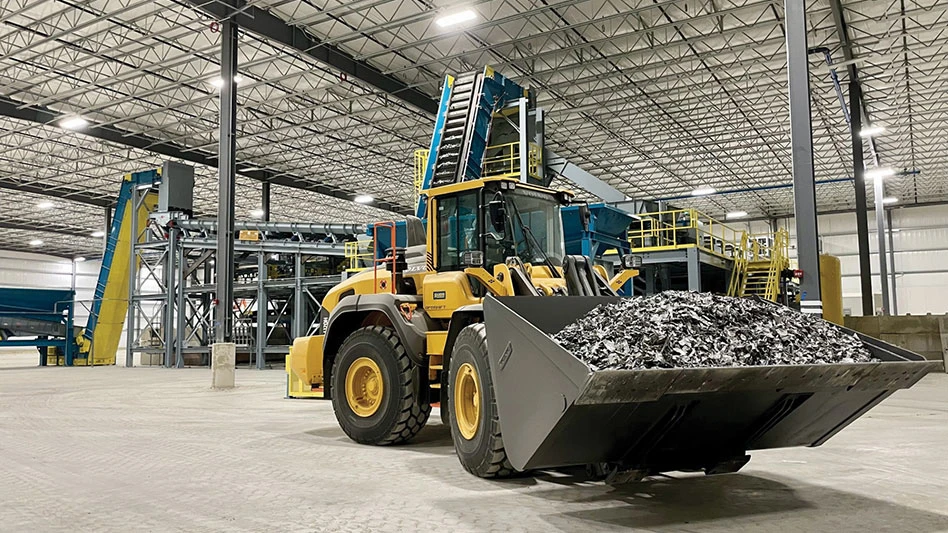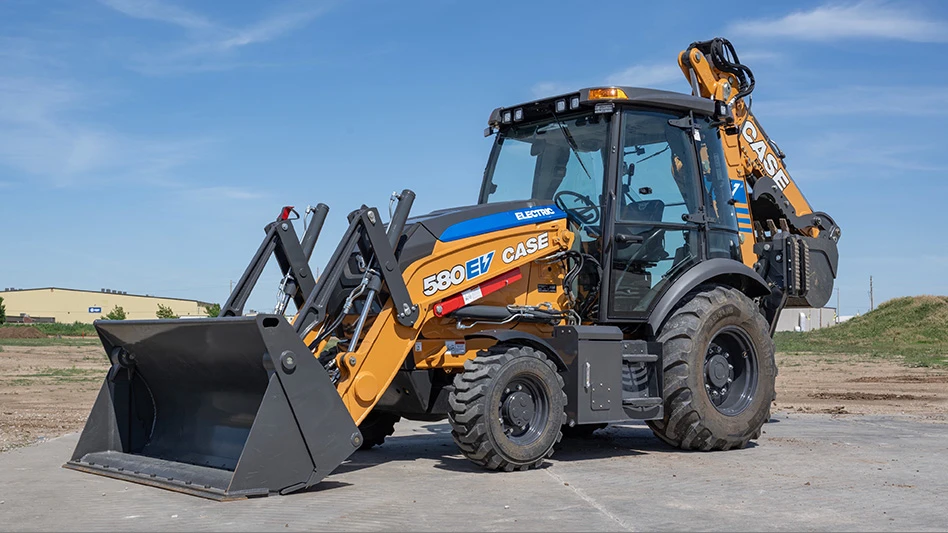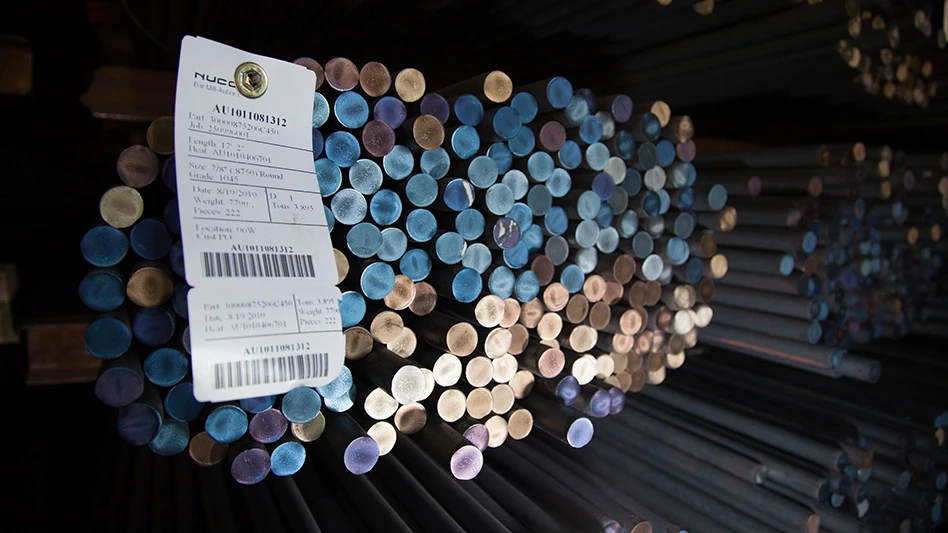Automobile Shredder
– A hammermill-style shredder large enough to shred whole cars into fist-sized chunks in less than a minute.Automotive Shredder Residue (ASR) – The material left over after an automobile has been shredded and the ferrous metal and other marketable materials have been separated. Also known as fluff.
Balers – Machines that compress scrap to ship it as sheared and condensed cubes.
Basic Oxygen Furnace (BOF) – The updated replacement of the traditional open-hearth furnace, the BOF refines molten iron mixed with steel scrap in a process that can take place in under one hour. Unlike electric arc furnaces, which can melt up to 100 percent ferrous scrap, melts taking place in BOFs can usually contain no more than about 25 percent scrap.
Billet – A solid, semi-finished round or square product that has been hot worked by forging, rolling or extrusion.
Blister – A defect in metal produced by gas bubbles either on the surface or formed beneath the surface while the metal is hot or plastic. Very fine blisters are called "pin-head" or "pepper" blisters. Also a variety of iron intermediate in composition and properties between wrought iron and cast iron (containing between 0.5 percent and 1.5 percent of carbon) and consisting of an alloy of iron with an iron carbide. Steel, unlike wrought iron, can be tempered and retains magnetism. Its malleability decreases and fusibility increases with an increase in carbon.
Capacity – Steel mills are often ranked by two capacity types. Engineered capacity is the volume of steel a mill could produce if optimal conditions are met year-round. True capacity is usually a lower figure that takes into account standard maintenance procedures and seasonal factors that affect operating conditions.
Charge – The material contained in a given steel furnace melt, such as a mixture of scrap metal and pig iron in an electric arc furnace. The act of loading and heating the material in the furnace is also known as charging.
Consolidation – The act of forming a publicly traded company with the purpose of acquiring existing firms engaged in identical or related businesses to create national or global corporation with significant market share.
Deox – Aluminum in the form of various shapes, such as shot, cones, stars or pyramids, that are important in the steelmaking process as they remove excess oxygen from the molten steel, producing a stronger finished product.
Direct Reduced Iron (DRI)
– A scrap substitute material created by a process that uses natural gas to produce a substance that contains as much as 97 percent pure iron. The resulting material is desirable for its low tramp element content, but requires an affordable supply of natural gas to be produced economically.Electric Arc Furnace (EAF) – A steel-making furnace in which ferrous scrap can make up to 100 percent of the material melted. The heat in the furnace is created by electricity that travels (or arcs) from graphite electrodes to the material to be melted. The term "mini-mill" is used synonymously with steel mills that have EAFs.
Extrusion – The process by which applying pressure forces heated aluminum billets or logs through a metal die.
Feedstock – Any material used at the front end of an industrial process. For a scrap processor operating a ferrous shredder, automobile hulks might be considered feedstock. At a mini-mill, ferrous scrap or scrap substitutes would be the feedstock material.
Hammermill – A high-speed rotor equipped with large hammers for pulverizing material and metallic objects into smaller sizes.
Home Scrap – Excess steel that is generated at a mill and often routed back to the furnace.
Hot Briquetted Iron (HBI) – A form of direct-reduced iron (DRI) formed into the shape of bricks, chunks or ingots.
Ingots – Molds in which metal is cast or a mass of metal cast into a convenient shape for storage or transportation to be later processed.
Iron Carbide – A scrap substitute that uses natural gas in its manufacturing process to create a material that is roughly 90 percent iron and 6 percent carbon.
Least Cost Suitable Charge (LCSC) – An electric arc furnace formula to determine what to use in any given melt based on current prices and suitable chemical composition.
Magnetic Separation – A system to sort metals from each other and from nonmetallics using a variety of magnetic devices.
Melting Yield – The amount of steel produced as a percentage of feedstock entering the furnace at a steel mill.
Mini-mills – A sub-category of steel mills often defined by the presence of electric arc furnaces. Many financial analysts also categorize mini-mills as using non-union labor and being operated by smaller, newer companies.
No. 1 Heavy Melt – Ferrous scrap grade consisting of iron and steel items ¼-inch or more in thickness measuring no more than 60 inches by 18 inches, to fit in a standard charging box.
No. 2 Scrap – Ferrous scrap grade consisting of iron and steel items less than ¼-inch thick but more than 1/8-inch thick, and measuring no more than 60 inches by 18 inches, to fit in a standard charging box.
Pig Iron – A cast iron material produced in a blast furnace.
Prompt Industrial Scrap – Excess steel or other material generated at large manufacturing facilities. Prompt scrap may take the form of trimmings from a stamping process or turnings or borings left over from a machining process.
Remelt Secondary Ingot (RSI) – Aluminum scrap that is recycled into an intermediate product without a specific chemical composition. Independent fabricators and companies that melt scrap or dross to produce RSI or molten metal that is used in their plants for direct processing or sold in the market commonly use this technique.
Scrap Substitutes – High-iron content materials used as replacements for ferrous scrap in electric arc furnaces. Much of the scrap substitute made is manufactured by steel mini-mill companies seeking to ensure a supply for their furnaces. (Also see "Direct Reduced Iron," "Iron Carbide," and "Pig Iron.")
Shear – A machine that cuts metal scrap (after it has been condensed) to produce uniform shapes for shipping.
Shredded Scrap – The pieces of ferrous scrap produced by shredders, often from shredded vehicles and appliances. The fist-sized chunks are transportable and saleable as a commodity.
Slab – Thick steel that in one standardized form is 10 inches thick and from 30 inches to 85 inches wide.
Smelter – Device that melts or fuses (as ore), often producing an accompanying chemical change to separate the metal.
Spectrometer – An instrument that measures wavelengths of light spectra to determine the chemical composition of an item. They are often used to check for the existence of tramp elements in ferrous scrap.
Toll Processing – One company performing a value-added service to improve material belonging to another company. Within the scrap industry, this can be the processing of prompt scrap from a nearby industrial facility. Within the steel industry, this can be the slitting, rolling or coating of steel produced at a nearby mill.
Tonnage Types
• Gross Ton – Weighing 2,240 pounds, this tonnage measurement is often used for ferrous scrap and iron ore.
• Metric Ton – At 2,205 pounds (or 1,000 kilograms), this unit of measure is standard in most of the world.
• Short Ton – 2,000 pounds, the most standard ton measurement used within the United States.
Tramp Elements – Elements considered undesirable in most steel furnace melts but often found mixed with ferrous scrap. Copper, nickel, chromium, tin and molybdenum are among those often considered in this category. When these elements are present in steel after the melt process, they are also known as residuals.
Turnings – Small bits of scrap created as a result of lathing or other machining operations at industrial facilities.
Vertical Integration – A corporate strategy of moving a company into related fields, usually in the direction of materials supply. This often takes place through acquisition.
White Goods – Large household appliances such as ovens, washers and dryers that are part of the ferrous scrap stream.

Explore the January 2006 Issue
Check out more from this issue and find your next story to read.
Latest from Recycling Today
- Indiana county awarded $65K recycling grant
- Mixed paper, OCC prices end year on downward trend
- Updated: CAA submits final draft program plan in Oregon
- Enviri names new president of Harsco Environmental business
- Survey outlines ‘monumental challenge’ of plastic packaging collection in UK
- Nippon Steel acknowledges delay in US Steel acquisition attempt
- BASF collaborates to study mechanical plastic recycling
- Commentary: navigating shipping regulations for end-of-life and damaged batteries





